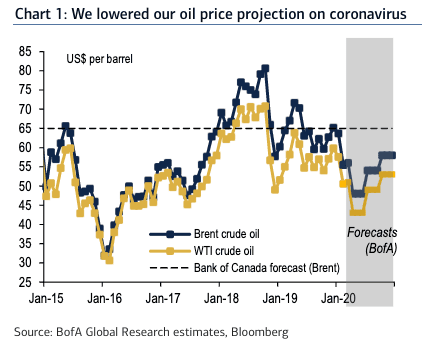Canadian Dollar Under Pressure against the Pound Ahead of Bank of Canada Interest Rate Cut
- BoC could follow RBA and cut rates
- Risk to CAD value is a surprise 50 basis point cut
- Downside risks to CAD outlook growing say Bank of America

Above: File image of Bank of Canada Governor Stephen Poloz. Image © Bank of Canada, Reproduced Under CC Licensing
- Spot GBP/CAD: 1.7083, +0.42%
- Bank transfer rates (indicative): 1.6485-1.6605
- FX specialist transfer rates (indicative): 1.6850-1.6929 >> More information
The Bank of Canada (BoC) is widely expected to cut interest rates on March 04 in sympathy with an apparently coordinated central bank action to inject capital and confidence into the global financial markets, amidst fears of a global economic slowdown owing to the coronavirus outbreak.
As with other currencies linked to central banks that have relatively high interest rates, the Canadian Dollar appears to be falling in anticipation.
The Bank of Canada has interest rates set at 1.75%, one of the highest in the developed world. This superior interest rate has been a source of support for the Canadian Dollar in 2019 and 2020, but the loss of this advantage could pose downside risks for the currency.
Key to the Canadian Dollar's reaction on Wednesday will be the guidance on delivered by the BoC on whether further interest rate cuts will be necessary, with the rule of thumb being that the promise of any further rate cuts would likely weigh on the currency.
"We expect the Bank of Canada to cut 25bp on 4 March with a statement that leaves the door open for further cuts," says Carlos Capistran, Canada and Mexico Economist at Bank of America Merrill Lynch. "We expect the statement to highlight the negative impact on economic activity from COVID-19 including lower oil prices, lower external demand and disruption to global supply chains."
Bank of America forecast the coronavirus outbreak to bring Canadian GDP growth down to 1.0% in 2020, which will widen the output gap much more than what the BoC estimated on its January Monetary Policy Report, ultimately prompting it to cut rates.
"How much the BoC ultimately cuts and the timing partly depend on how the Fed reacts to the virus, as we think at least some coordination is highly likely," adds Capistran. Expectations for a Federal Reserve interest rate cut have risen sharply over recent days with the market now pricing in a sizeable 100 basis points of cuts for 2020 with a 100% expectation for a cut to be delivered at the mid-March policy meeting.
This expectation could clear the ground for the BoC to act aggressively on rates.
Above: Expectations for lower oil prices - oil is a key earner for Canada - could give the BoC additional cause to cut interest rates.
Ahead of the BoC decision the Canadian Dollar is showing weakness with the Pound-to-Canadian Dollar exchange rate now quoted at 1.7083, which is half a percent lower on the day. The U.S. Dollar-to-Canadian Dollar exchange rate is meanwhile at 1.3329 and the Euro-to-Canadian Dollar exchange rate is at 1.4893.
Bank of America currency strategists say the Canadian Dollar is vulnerable to the BoC cutting rates in a more aggressive fashion than markets are currently expecting; "there is a risk the BoC could deliver a single up-front 50bp cut, potentially in coordination with easing by other central banks, though this is not what our Canada Economics team expects," says Ben Randol, G10 FX Strategist at Bank of America.
Randol sees downside risks to the Canadian Dollar in 2020 growing, "and global macro conditions are becoming increasingly supportive of our pessimistic scenario."
The strategist says the USD/CAD exchange rate could rises to 1.35 with risk of overshoot to the high 1.30s. Such a move in USD/CAD could add upside impetus to cross rates such as GBP/CAD and EUR/CAD.
"Prospects for domestic and international growth have been severely undermined by the coronavirus, and recession risks have increased. Additionally, poor Canadian terms of trade have further deteriorated as a result of sharply weaker commodity prices, in particular WTI oil in the $40/barrel range. We think that these developments, if sustained, may lead to persistent US vs. Canada economic divergence, supporting CAD rates outperformance and an additional leg higher in USD/CAD," says Randol.
A rate cut at the BoC would follow the 25 basis point cut to interest rates at the Reserve Bank of Australia announced on Tuesday, which represents an all-time low for the country. Note that the Aussie Dollar actually rose in the wake of the rate cut as markets had been expecting a more substantial 50 basis point cut. Nuances are important when considering a currency's reaction to a central bank decision and this should make Wednesday's BoC event one to watch.











